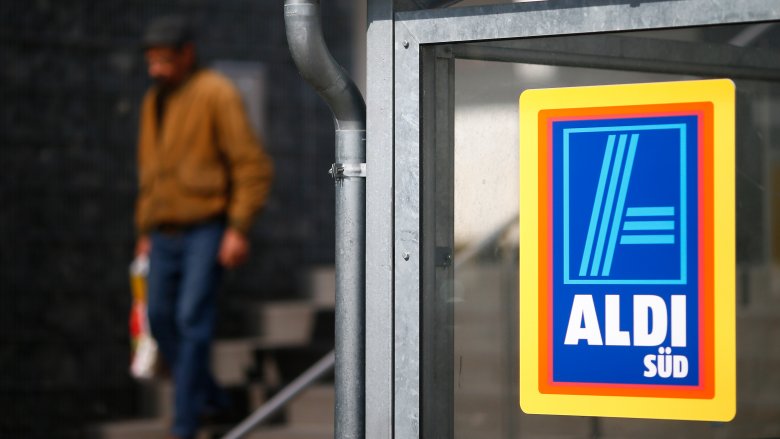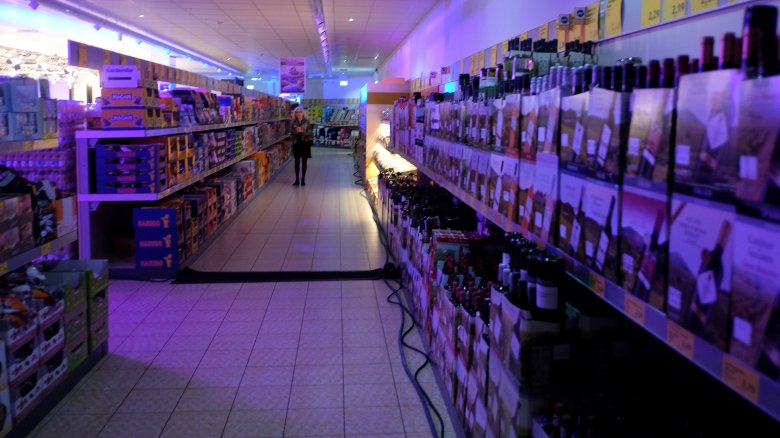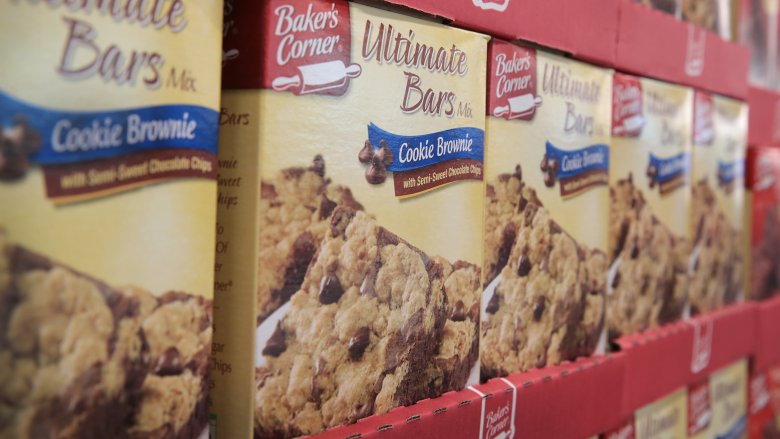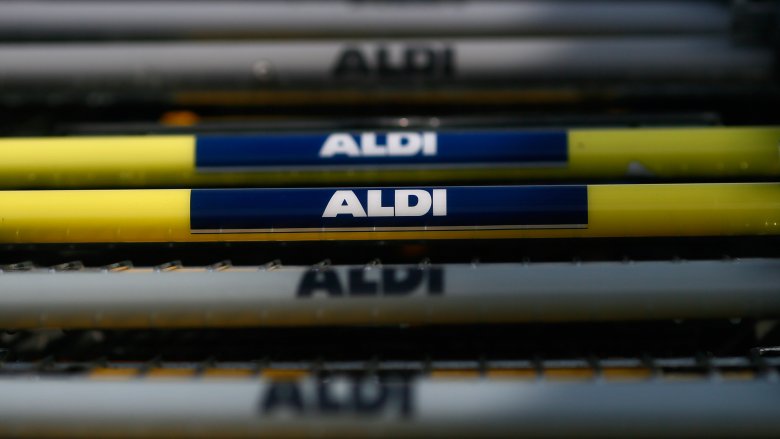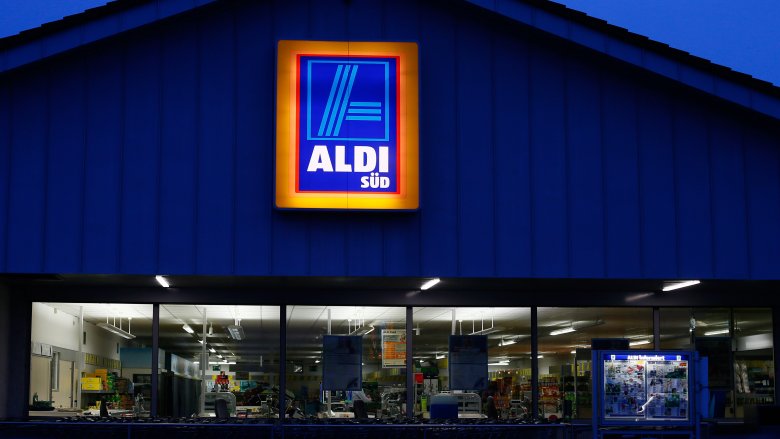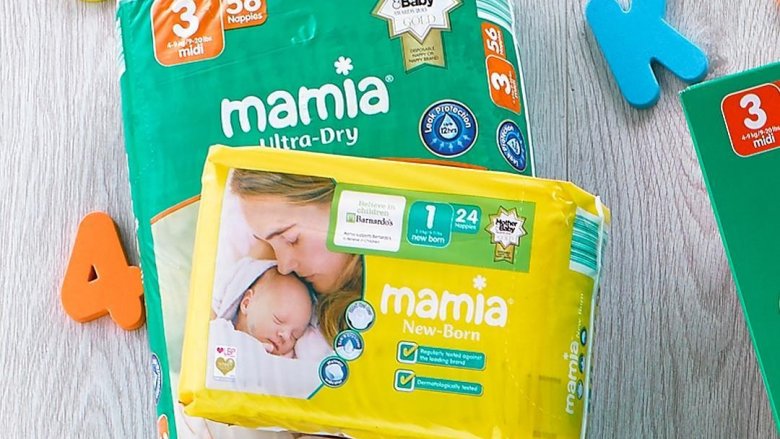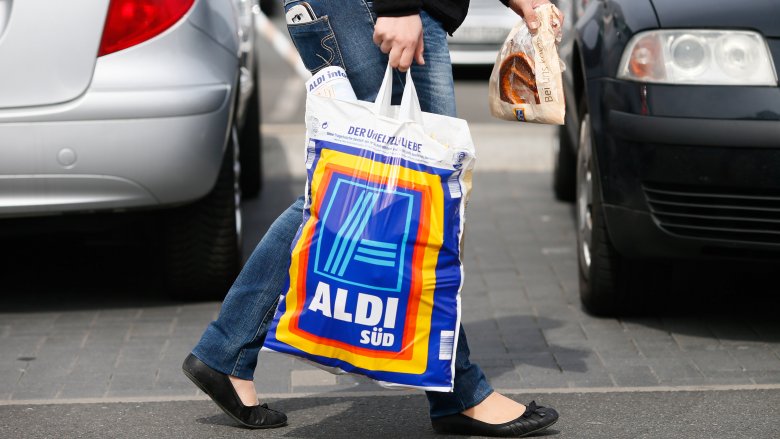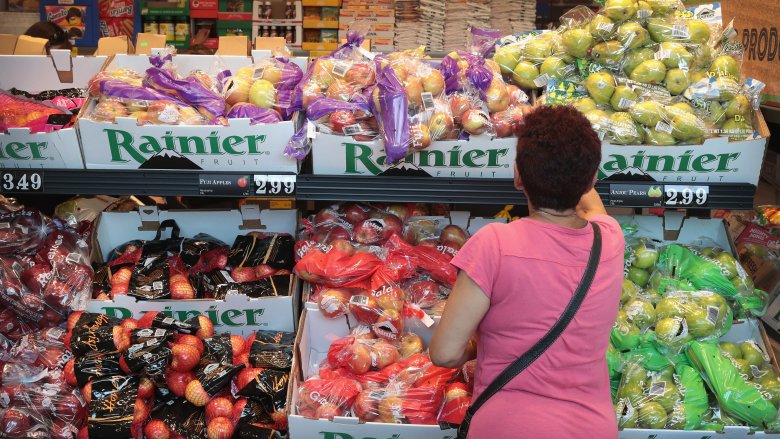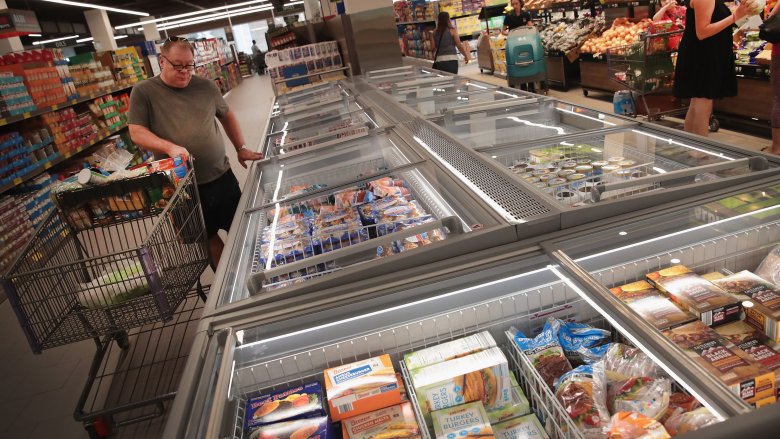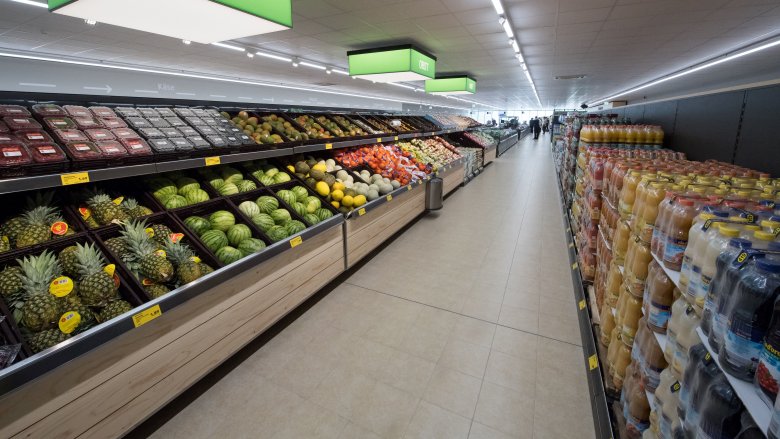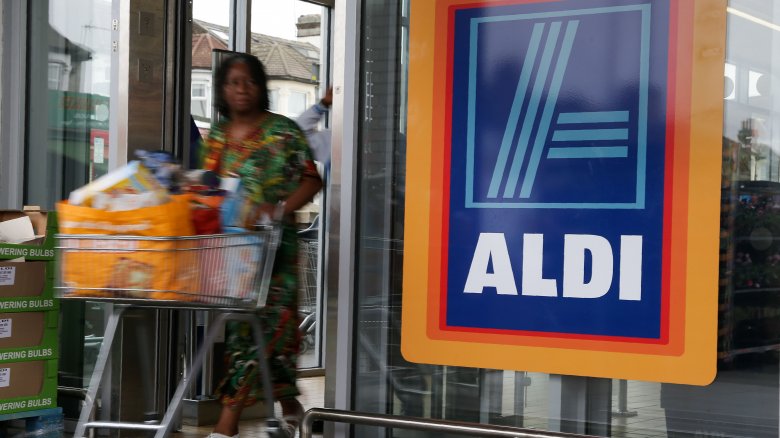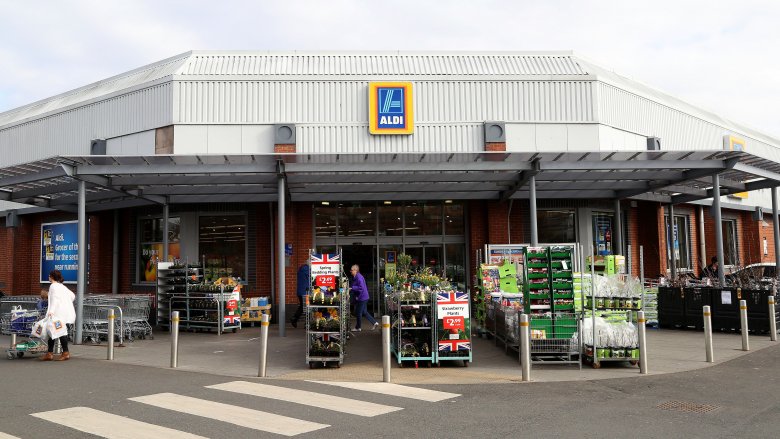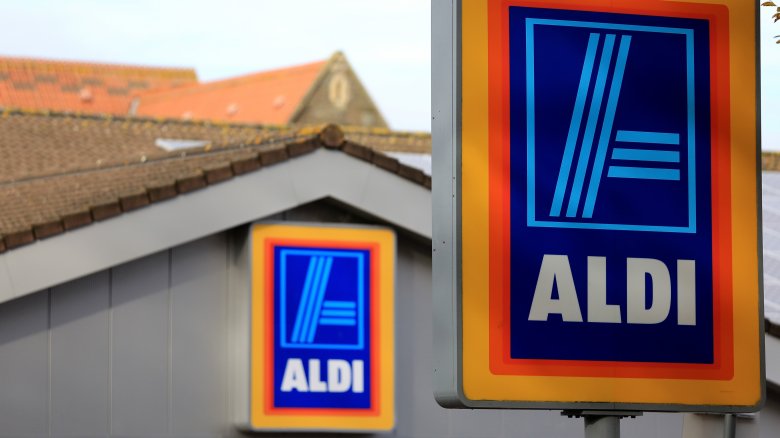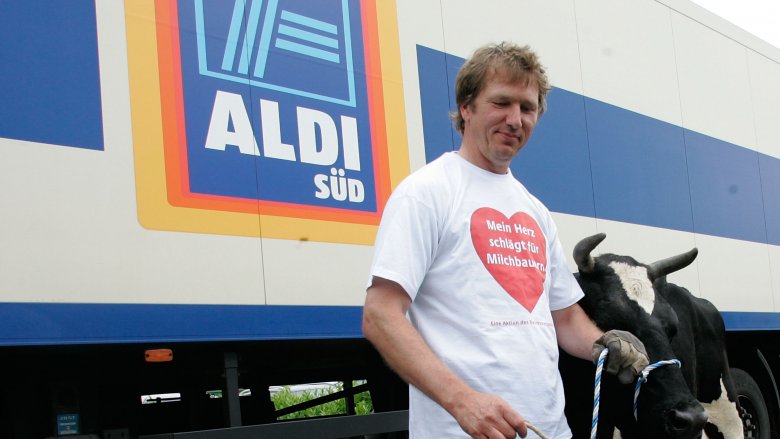How Aldi Gets Their Prices So Low
So, if you've ever shopped at Aldi, you know they save you money. Lots of money. They're so cheap it seems like a given they have to make sacrifices somewhere. Their legions of fans will attest to the fact that they're not selling cheap, inferior products — so how do they get those prices so low? It turns out there are a ton of ways Aldi got creative with cutting costs so they can pass those savings on to you. Let's look at how they really do it.
They only open during peak hours
Sure, staying open late might be super-convenient for the customer, and some of us even prefer to do our major grocery shopping in the middle of the night. Those that do, do it to avoid the crowds, and since there's not too many people shopping at midnight, that means grocery stores are spending more than they're making. Capital Strategies, Inc., says Aldi eliminates the problem by only opening during peak shopping hours, and that means they usually close at 7, 8, or 9 p.m. It cuts down on everything from staffing costs to utilities, and, according to Aldi corporate, a lack of late-night noise makes them a great neighbor, too.
Extra packaging is kept to a minimum
Ever ripped open a bag of chips or cereal to find half of it's filled with air? That's actually called ullage, and The Guardian says minimizing the ullage in their packaging is one way Aldi's saves money.
Less air means smaller boxes and bags for the same amount of product (and let's face it, it makes you feel like you're not being fooled by big boxes). Those smaller packages create some serious savings from start to finish: items cost less to package, more fit on a single pallet, more fit on a truck, stocking the store can be done with lower fuel costs, and once the products are there, they take up less room and stocking is way more efficient. It's such a big deal, it's hard to believe more places don't do it.
You return your own cart
There's nothing more annoying than going to Aldi and realizing you've forgotten your shopping cart coin, but that little inconvenience saves you a ton of money in the long run. How? You get the coin back, after all, as long as you're a good citizen and return the cart to the right place. That, says Bryant University and Harvard Business School professor Michael Roberto, is where the savings starts.
Since customers are doing the legwork and returning carts to the trolley at the front of the store, Aldi employees don't have to do it. Labor costs are one of any business's biggest expenses, and every little bit helps — especially when it adds up to hours and hours of time saved every week.
They spend extra upfront
According to documents released by Aldi's corporate that detail their requirements for a location, they're incredibly specific in what they look for. Not only is the perfect Aldi's location on a street corner and near other stores — so people can easily pick up whatever they can't find on Aldi's shelves — but the cost-saving measures start at this stage of the game, too. Aldi says their carefully placed stores are built with only the best, most durable, and long-lasting building materials. It'll cost more upfront, but they're thinking long-term. Aldi properties tend to cost the company less over time, because of low maintenance costs, few things that need replacing, and they sustain little to no wear and tear. The benefits are twofold — it saves them money, and it makes them a good neighbor.
They stock fewer products
You won't need to choose from, say, 20 different types of brown rice when you go to Aldi, and that's because they limit their stock. You might know this, but you might not realize just how limited they are. According to the Tennessean, Aldi keeps around 1,400 core items in stock all the time. That sounds like a lot, but compare them to competitors like Kroger and Wegmans. On average, these Aldi competitors keep around 30,000 core items — that's a big difference!
How does that impact the bottom line for Aldi and, in turn, for their customers? Personal finance expert Lauren Greutman says the big savings come in the bulk buys that limited stock allows Aldi to make. Instead of buying small quantities of, say, 20 different types of fancy ketchup, Aldi buys a huge quantity of one or two kinds. Then, all those bulk discounts make their way to shoppers.
They're mostly private label
Aldi corporate says more than 90 percent of the items on their shelves are a part of their own private label, and there are many reasons they do this. Not only does it allow them to keep strict quality control measures in place, but it also allows them complete control over everything that happens along the supply chain. According to Lauren Greutman, that also eliminates a part of the process that increases prices at other stores: the middleman. There are no extra markups, and since Aldi is doing so much in-house, they're able to pass along some serious savings.
They don't give away bags
On the surface, it seems like another inconvenience. When you go to Aldi, you'd better remember your reusable shopping bags, or you're going to be buying some more bags. They don't just do it to be environmentally friendly (although that's part of it), but Aldi's customer service department says it's part of the reason they can pass along some serious savings. Your handful of shopping bags adds up when you take into account all of Aldi's customers worldwide, and if they're not buying bags for every one of those customers just to throw away, that's a huge savings they're passing on to you — and the planet.
They limit produce and other perishables
When Time took a look at Aldi's foray into the American market and the overwhelming success they had, they noted it wasn't for everyone. One of their complaints was Aldi's limited selection when it came to things like produce and perishable items, and actually, that's on purpose. According to Postharvest Handling: A Systems Approach, it's a completely legit marketing approach, and it's built into their business plan. Since there's no guarantee something super-perishable like fruit or vegetables will sell before it goes bad, they minimize their risk by stocking less of it.
Aldi South has said that their goal when it comes to ordering, stocking, and selling perishable items is simple: minimize waste. That saves them money, and they also say you shouldn't feel too bad about the food that doesn't sell — 81 percent of Aldi stores partner with charitable organizations to make sure it goes to good use.
There's not much extra stock
Take a glance around an Aldi store, and check out the footprint. There's not a whole lot of space for storage, and that's by design, too. Unlike a lot of stores, Aldi doesn't have a majority of their cash tied up in merchandise, and that's because, according to the Technology and Operations Management blog of the Harvard Business School, they use an inventory system called the just-in-time model.
So, what does that mean? According to The Balance, it means they're able to lower their operating costs by not keeping a supply of stock in warehouses and storerooms, that new stock is ordered only when it's absolutely needed, and it relies on the ability to keep ridiculously good tabs on demand and product movement. It's risky — if there's a breakdown in the supply chain, it could be disastrous — but Aldi's reliance on their own private label brands gives them an advantage here, too.
They stock shelves the easy way
When it comes to getting product off the truck, into the store, and on the shelves, Aldi has it down to a science. Product is typically shipped in the same boxes it's going to be put on the shelves in, and according to Frugal Bites, their boxes aren't just boring old cardboard, they're specially designed to look like they're a part of the display. Milk is shipped pre-loaded onto racks, so it just needs to be wheeled into place with no need to shuffle around new and old product. Some things — like basic baking supplies — will always be found on the lowest levels of Aldi's shelves, and that's because they're put into place still on the pallet. Since stocking takes Aldi's employees a fraction of the time it takes other stores' employees, that frees them up to do other tasks and cuts back on labor costs.
There aren't many employees per store
While a traditional grocery store might have dedicated roles for everything from stocking shelves and running the cash registers to manning the deli counter, Aldi keeps staffing to a minimum by expecting employees to be versatile enough to fill a variety of roles. If you're looking at career opportunities available in the US, you'll find Aldi stores hire a store manager, manager trainee, shift manager, and store associate. What you won't find are job descriptions, and that's because there are a huge variety of tasks each employee is expected to handle. Aldi's pretty mum on how many employees they officially have, but according to Indeed, there are between eight and ten people employed at every store, and there are never more than four on shift at any given time.
International hiring is a bit different, but the concept is the same. In Ireland, for example, Aldi stores are staffed by a store manager, assistant store manager, store assistant, and a caretaker. Everyone's expected to do a little bit of everything, and that means there's little down time for employees. They're compensated well, but Aldi says right upfront the job isn't for everyone.
Their stores are small
This is another bit of trivia you might know, but not entirely realize the difference it makes. Sure, you know Aldi stores are smaller than, say Walmart, and that's by design. Aldi corporate says the average store footprint is only 17,000 square feet, and Stewart Construction — who has built more than 70 Irish Aldi locations — says there's only the rare instance stores are any larger.
That number might not mean a whole heck of a lot, so let's put it in perspective. According to NASDAQ, Walmart stores had an average size of 162,000 square feet back in 2010, which shrank to 159,000 in 2013. Now, consider how much each company spends on things like electricity and heating, and you'll see why those smaller stores are a huge part of Aldi's price plan.
Their stores are insanely energy efficient
The smaller footprint of Aldi stores is just one way they minimize their operating costs. All Aldi stores are designed and outfitted to be as environmentally friendly as possible, and that includes being equipped with things like LED lighting, natural lighting, energy-saving coolers and freezers, and, according to Aldi South, they also use heat recovery technology that lowers their heating costs by as much as 30 percent.
Many Aldi stores are running on a complete energy management system that monitors the impact of everything from lighting to cold storage. New stores are outfitted with the most efficient technology, and older stores are routinely upgraded to make sure they're running at peak efficiency.
Their trucks are even energy efficient
Aldi's cost-saving methods extend to their trucks, too. Not only does their smaller, less wasteful packaging mean fewer trips for drivers, but the trucks they use are top of the line when it comes to efficiency. They're lighter than other delivery vehicles, Aldi says, and they're even designed to be more aerodynamic. Trucks are equipped with lighter tires, the best in fuel efficiency and management systems, and they even use GPS technology to not just find their way from point A to point B, but they do it in the most efficient way possible. The word "efficient" is used a lot when it comes to Aldi, we know, but streamlining their processes has allowed them to make a huge difference when it comes to the bottom line and your costs.
